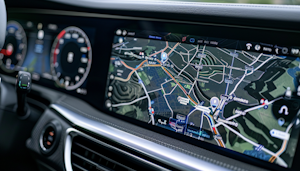 UseCasesFor.ai
UseCasesFor.ai
Choose Topic
 UseCasesFor.ai
UseCasesFor.ai
AI Use Cases
A collection of over 250 uses for artificial intelligence
A continually updated list exploring how different types of AI are used across various industries and AI disciplines,including generative AI use cases, banking AI use cases, AI use cases in healthcare, AI use cases in government, AI use cases in insurance, and more

Sign up
to receive a PDF containing all the use cases and stay updated with the latest AI trends and news (you can always unsubscribe)
Route optimisation

Introduction
The automotive industry is one of the biggest and most advanced industries in the world which has been revolutionized by the use of Artificial Intelligence. Another key area that has been greatly improved is the route optimization that is the process of identifying the best route. This is an important aspect of the automotive industry particularly in the area of logistics, ride sharing services and autonomous cars. Some of the areas that have greatly benefited from these improvements include ML, NLP, and General AI. These have been used in setting the best routes that help in minimizing on fuel consumption, increasing delivery time and increasing overall efficiency of the operations.
Challenges
There are various challenges that are encountered in application of route optimization in the automotive industry. The first one is the dynamic nature of the traffic flow, which prevents the accurate prediction of the best route. The second one is the environmental conditions which include the weather, road conditions, traffic jam, and construction work that need constant modification. The third one is the problem of dealing with huge amounts of data from different sources such as GPS, traffic flow, and weather information. The fourth one is the problem of how these technologies can be implemented in the current systems. Finally, it is crucial to address the issue of how to incorporate AI and ML for route optimization in a way that would enhance the safety of the driver and the passenger.
AI Solutions
These challenges include the following: These challenges include the following: AI, ML, and NLP offer significant solutions to these challenges. There are ML algorithms that can use historical data to predict the traffic flow and adapt the routes accordingly. NLP is also able to analyze unstructured text data such as social media posts or news articles which contain information regarding traffic or road conditions, as another source of information for the routing problem. Of such type is general AI, which refers to machines that are capable of performing any intellectual task that a human being is capable of doing, and which can be used for real time decision making. For example, Google’s DeepMind employed reinforcement learning, a type of machine learning, to lower the energy consumption for cooling its data facilities by 40%. The same technique can be used in the automotive sector in order to determine the best possible route.
Benefits
There are numerous advantages of applying AI in route optimization and the following are some of them. Such advantages include; minimising on fuel consumption, effective and efficient delivery time and most importantly, effective and efficient operations. This also means that it helps to reduce CO2 emissions thus being sustainable. As far as the customer is concerned it could imply better delivery time and cheaper delivery costs. To the drivers it may result in reduced time on the road and enhanced safety. To businesses it may lead to huge cost savings and increased customer satisfaction.
Return on Investment
There are significant return on investment (ROI) when using AI for route optimization. For example, UPS claimed that they save $400 million per year due to routing optimization with their ORION (On-Road Integrated Optimization and Navigation) system. DHL is also another example of a company that applies AI for route optimization especially in delivery services and this has been proven to reduce the distance covered by 15%. The following are some of the costs that can be cut as a result of decreased fuel usage and enhanced operational efficiency thus realizing high returns from these technologies.